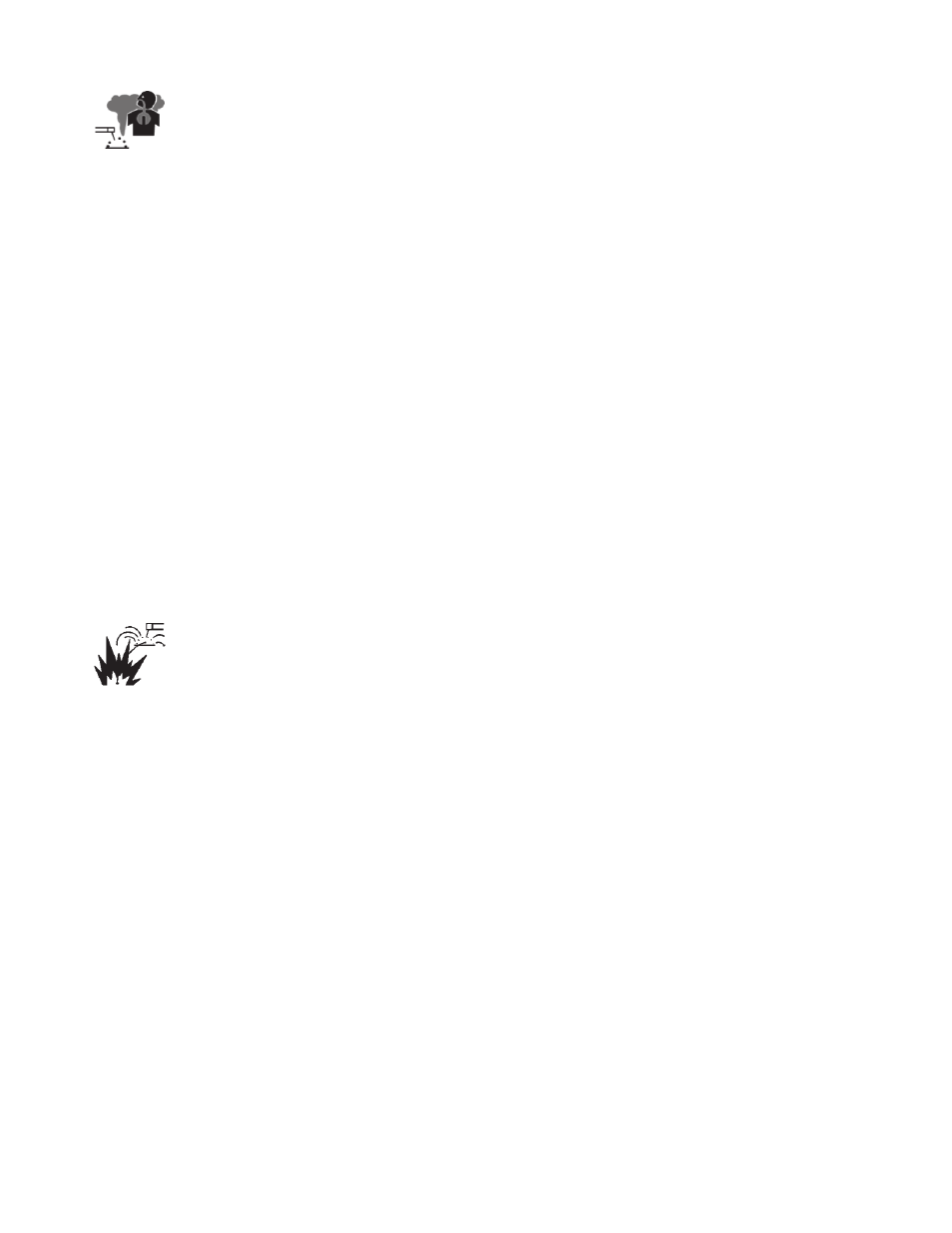Beware of the welding fumes, Fire prevention – BUG-O Systems BGW-5000 User Manual
Page 5

5
3. Beware of the welding fumes
A. The exhausted gas during the welding process is harmful to our health, thus we should avoid inhaling
these gases. When we conduct the welding operation, the head should avoid facing the welding fume
and the exhausted gas. It is necessary to install enough ventilation equipment to keep these gases
away from the breathing zone. In the welding process of stainless steels, or layer rich in cadmium (refer
to corresponding items on containers and MSDS), or steels containing lead and plated with cadmium
with the manual metal arc welding, some poisonous gas and fume will be generated, and then specific
ventilation equipment is needed. In these conditions, try to reduce the direct exposure and local gas
exhaustion or mechanical ventilation equipment should be applied when it is lower than the lowest value.
In the restricted zones or outdoors, protection masks are needed. Also take protection measures in the
course of welding galvanized steels.
B. Welding operations are forbidden near the steam of chloridized hydrocarbons generated in the course
of the lubrication, cleanliness or spraying operations. The arc heat and arc light will react with these
chloridized hydrocarbons to generate gaseous phosgene and stimulus with virulent property.
C. The shielding gas used for the welding technology is harmful to our body and even can lead to death.
It is necessary to install enough ventilation equipment to ensure the breathing safety, especially in a
narrow working space.
D. Read through and understand the supplied manuals for the equipment and consumables, including the
material safety databases (MSDS). Be sure to comply with the employer’s safety regulations as well.
The MSDS can be obtained from distributors or the manufacturers.
4. Fire prevention
A. Keep combustibles away from the welding area. If this isn’t possible, they should be covered in the
chance there is a fire caused by the welding spatter. Keep in mind that welding spatters and hot material
can easily flow though the slit in the welding area and then lead to a fire hazard. In addition, welding
operation near a pipeline for the fuel gas should be forbidden and fire-fighting equipment should be
instantly accessible.
B. When compressed gas is needed in the work site, specific measures must be taken to avoid the
occurrence of execrable incidences. Corresponding items can be referred to the “Welding and Cutting
Safety” (ANSI standard A49.1) and the operation instructions.
C. When the welding equipment is not being used, be sure that the electrode circuit does not contact with
the work piece or the ground. A sudden contact may lead to overheating and the possibility of a fire.
D. When proper measures are not taken combustible or poisonous gas may be generated. The heating,
cutting or welding of an oil tank, barrel or other vessels are all forbidden. An explosion may occur even
when it is cleaned. You can purchase the “Safe Practices for the Preparation of Containers and Piping
for Welding and Cutting” from the American Welding Society (AWS) and the code is AWSF4.1.
E. Make sure that the empty casters or vessels are exhausted totally before the heating, cutting or welding
operation. Otherwise, there is a possibility to result in a explosion.
